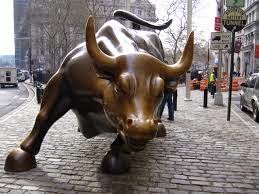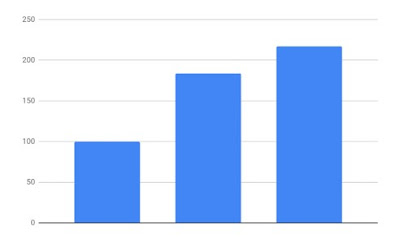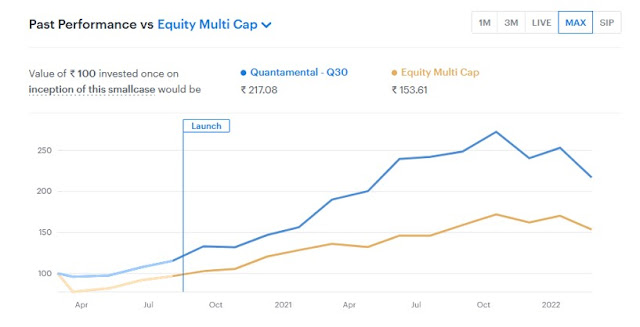Wishing all of you a very Happy Holi.
1. Ethanol may not be better than fossil fuels
As a way to replace dwindling reserves of oil, ethanol subsidies had a certain brutal logic, especially if oil prices were going to keep rising with no end in sight. But as a way to address climate change, the program never made any sense. Corn ethanol may well be worse for the climate than fossil fuels, and the program does significant damage to both the economy and the environment. Its sole beneficiaries are large agricultural corporations—and the politicians who serve them.
Cheap gasoline is nice in the short term, but in exchange for that, the RFS gives us more expensive food. In the United States, the cultivation of corn for ethanol now requires a staggering 38 million acres of land—an area larger than the state of Illinois. By comparison, the total area of cropland used to produce grains and vegetables that humans eat is only about twice that acreage. In other words, the U.S. devotes enough land to corn-ethanol production to feed 150 million people.
Many studies have shown that the greenhouse-gas impacts collaterally associated with ethanol production—the full “carbon-cycle” effect—negate that 20 percent reduction and may even make corn ethanol worse for the climate than fossil fuels.
A large amount of fossil fuel is required to produce, grow, harvest, transport, and especially process a gallon of ethanol, eating up much of the difference in carbon emissions between ethanol and regular gasoline.
Moreover, as the report notes, the production and use of ethanol results in higher emissions of ozone, particulate matter, and sulfur oxide than fossil fuels. Studies have demonstrated that corn production with nitrogen-based fertilizers releases high levels of nitrogen oxide into the atmosphere, which not only destroys ozone but has a higher greenhouse effect than carbon dioxide. And when those costs are added to the lost carbon sequestration from deforestation and other land-use changes, the impact on greenhouse-gas emissions from ethanol production is at best only slightly beneficial, and could be even worse for the climate than gasoline.
https://www.theatlantic.com/
2. Don't ignore your gut feelings
Despite popular belief, there’s a deep neurological basis for intuition. Scientists call the stomach the “second brain” for a reason. There’s a vast neural network of 100 million neurons lining your entire digestive tract. That’s more neurons than are found in the spinal cord, which points to the gut’s incredible processing abilities.
When you approach a decision intuitively, your brain works in tandem with your gut to quickly assess all your memories, past learnings, personal needs, and preferences and then makes the wisest decision given the context. In this way, intuition is a form of emotional and experiential data that leaders need to value.
Even if you’re not consciously using your intuition, you still probably experience benefits from it every day. Everyone knows what it feels like to have a pit in your stomach as you weigh a decision. That’s the gut talking loud and clear.
https://hbr.org/2022/03/how-
3. Waste Heat From Data Centres Used To Warm Local Buildings
Data centres typically consume huge amounts of energy – a significant proportion of which is used to cool the facilities due to the enormous amount of waste heat that is generated during computation.
The waste heat from these local data centres will eventually be used to heat nearby buildings as a way to improve energy efficiency.
An AI system combines sensor data with airflow simulations so that cooling can be specifically targeted. At the same time, the computing loads in the three test data centres spread across different countries are distributed in such a way that all three facilities can be operated as energy-efficiently as possible.
The facilities will be integrated directly into the energy systems of their surrounding neighbourhoods and are to be supplied with renewable energy whenever possible.
The waste heat from the facilities are fed into existing medium- or low-temperature networks. In winter, it can therefore directly feed the building’s heating system and, over the year, simultaneously serves as a source for a heat pump that provides domestic hot water.
4. The untold story of Facebook Marketplace
(You need to read the whole story - Abhishek)
Facebook Marketplace is the world’s second-largest marketplace, in terms of monthly active users, behind only Amazon. It’s ahead of Alibaba, Walmart, eBay, Taobao, and has quietly left the once-unconquerable Craigslist in the dust. For years, I’ve been curious to learn what it took to make Facebook Marketplace work, when so many local marketplaces (including Facebook’s previous attempts) have failed. There is no better human alive to tell this story than Deb Liu, and below, for the first time, Deb shares the story behind Facebook Marketplace.
Deb led the team that pitched, built, launched, and scaled Facebook Marketplace from just an idea to what it is today. During her 11 years at Facebook/Meta, she also led teams that built Facebook Login, Facebook Pay, Facebook Commerce Manager, and dozens of other foundational Facebook products.
https://www.lennysnewsletter.
5. Water - Africa’s Gold
Women and children in Africa spend 4.5 million years collecting water every year: A pan-continental shortage has made hunting for water a daily exercise and forced Africans to spend more on water than on food.
In five of the past six years, Madagascar has reported severely deficient rainy seasons. In the past two years, rainfall has reduced by 40 per cent — the lowest in three decades. Since November last, the country’s public sector water company Jirama has conducted more than 30 cloud seeding operations. Localities in Malagasy highlands of central Madagascar did get rains but soon the dry weather followed.
With a near collapse of agriculture that employs 80 per cent of the country’s population and with 1.3 million of the country’s 27.7 million population surviving on food aids, the World Food Programme has termed this as the “first famine” caused by global warming.












